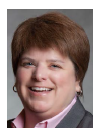Investment in mHealth is growing and in the first half of 2017 $3.5 billion was invested in 188 digital health companies. According to Juniper Research, the number of wearable devices will reach 130 million in 2018 at an estimated value of $19 billion. Its use has become widespread in medical settings with predictions that 65% of interactions with healthcare facilities in 2017 would use mobile devices, 80% of doctors saying they use smartphones and medical apps, and 72% accessing drug info on smartphones on a regular basis.
Applications for mHealth
The uses for mHealth vary widely, from chronic care management to population health analysis, according to Deloitte analysts, who add as healthcare shifts toward a patient-centered, outcome-based delivery model, mHealth will be an important partner in healthcare transformation.
Some of the drivers for the rise in mHealth include the focus on personalized medicine and precision medicine. Apps are used by pharma companies to gather data to support research and drive personalized medicine. And the rise of online patient communities has also had an impact as patients connect through either the internet or apps.
Digital interventions through mobile applications have the potential to make it easier to engage with patients and empower them to manage their own health. The use of mHealth devices makes it possible to monitor patients without requiring them to come in for as many visits. Interactions between healthcare professionals and patients can be conducted digitally, with information from those interactions stored digitally.
And wearables also allow the individual to assess their own health by, for example, monitoring sleep patterns and tracking daily activities or simply by having access to their own digital health record.
From the point of view of the healthcare practitioner, mHhealth can help to enhance productivity, for example through easy access to medical information, imaging, and lab results. The use of apps can help in other ways, such as point-of-care references, drug-related information including electronic manuals and drug calculators, and apps to analyze tests and studies.
Another important application is to help providers deal with the reams of documentation they face, allowing them to devote more time to patients. For example, Augmedix lets practitioners retrieve patient information without accessing a computer and has a chart note feature that captures physician notes while they interact with patients, so long as there is an Internet connection in the office.
The applications for mHealth are endless — from sending out reminders to patients to take their medications, to fitting patients with wirelessly connected ECGs and quickly alerting them to any issues, to conducting lab tests.
Healthcare providers leading the charge for mHealth regard these apps as important in helping to gather information about patients and deliver the right care to that patient at the right time. And policymakers also are throwing their weight behind mHealth initiatives. In Europe, an innovation hub for mHealth was established to foster research and innovation in mHealth, and to look at ways to prevent fragmentation in mHealth knowledge. The European Commission regards the mHealth hub as important in “streamlining efforts in research and innovation" for various purposes, such as enabling mHealth to be used in health services nationally and regionally, and driving consistent mHealth infrastructure and strategy.
Leveling the Health Playing Field
Emerging markets have been quick to embrace mHealth applications, often to fill gaps in healthcare, particularly in rural areas where there is often little or no established healthcare infrastructure. According to studies, mobile data collection tools improve collection of patient data, allowing for more efficient reporting and data storage, and making it easier for healthcare professionals to diagnose and monitor patients from any location. In Africa, for example, mobile phone penetration had reached 82% by 2014, demonstrating the potential of mHealth to transform healthcare. In another example, the use of mPrevention and education initiatives in India aimed at addressing the mental health of teenage girls in urban slums resulted in 62% of the users of these mHealth programs feeling more supported.
The development of various mHealth tools has brought important health benefits to emerging markets, including mobile eye exams and smartphone microscopes. In one example, an mHealth application developed by D-tree in collaboration with the Zanzibar Ministry of Health enables the registration and screening of pregnant women, and organizing their transportation to clinics when their babies are due. And another mHealth app, from eHealth Africa, enabled caseworkers to trace people who had been in contact with Ebola patients, helping to cut the reporting time for new Ebola cases by 75%. And a “text-to-change" program in Uganda aims to improve awareness of HIV and AIDS testing through bulk SMS messaging.
It’s not only about emerging markets. Reaching rural communities in the United States can also be challenging and again mHealth holds enormous promise. A pilot project in northern Arizona involved giving home monitors to 50 patients with congestive heart failure and monitoring their data for at least three months. The result was a massive decline in the number of days patients spent in the hospital because nurses were able to detect potential health problems before they escalated and help patients manage their health.
Interoperable mHealth
Increased use of mHealth requires that data is trustworthy and accurate, that the apps are easy to use and design, and that data security can be guaranteed.
To get the most from mHealth-derived data, it will also be necessary to have a network or backbone for the data to enable better data analysis. Many experts regard Fast Healthcare Interoperability Resources (FHIR) as perhaps the best option for enabling interoperability, making it possible to access data in all types of systems.
The SMART (Sustainable Medical Applications and Reusable Technologies) on FHIR platform is one way to enable this interoperability of medical applications on different IT systems. A dummy test showed that a patient could access his or her medication information from different EHR platforms through three different mHealth apps — managing medication lists, integrating with adherence tools, and passing information onto caregivers. The benefit of this interoperability is to enable access to complete health information on mobile devices at the point of care. (PV)
~~~~~~~~~~~~~~~~~~~~~~~~~
Four Dimensions of Effective mHealth
Single-use mHealth
Focuses on single purpose for a single user, typically consumer initiated
Smartphone apps and wearable products that support the user to record data
Consumer-driven focus on wellness, diet, and exercise
Social mHealth
Draws upon the support and encouragement provided through social networks
Gamification and competition-based apps that encourage users to meet goals
Consumers likely to pursue activities independently
Integrated mHealth
Links apps and devices with the formal healthcare system
Mobile technology linking patients and HCPs
Tailored to multiple end-users
Complex mHealth
Leverages advanced, integrated analytics for decision support
Predictive analytics applied to complex data generated through mHealth apps
Focus on achieving optimal
Source: Deloitte, Connected Health: How Digital Technology is Transforming Health and Social Care
~~~~~~~~~~~~~~~~~~~~~~~~~
Executive viewpoints
 Tim Davis
Tim Davis
VP, Digital Patient
ERT
Patient-Focused, Digitally Aligned
In order to be effective, digital health programs must be built around patients and their needs. Rather than implementing technology for technology’s sake, the industry must start by truly understanding patients’ problems and how they can help to solve them. Only then, when aligned with effective clinical interventions, can digital health programs lead to improved patient experience and quality of life.
 Karin Beckstrom
Karin Beckstrom
Senior Product Manager
ERT
Processes Simplified
Technology advancements such as voice-activated assistants are simplifying healthcare providers’ processes — from offering post-surgical patient education to enabling home-based self-care. Patients, who are enrolled in clinical trials, are also benefiting. Pharmaceutical companies are exploring voice AI technologies to simplify clinical trial participation for patients and to extend their research reach to include patients who would otherwise be excluded due to geographic location or manual dexterity limitations that make self-reporting difficult.
 Chris Cullmann
Chris Cullmann
Head of Digital
Ogilvy CommonHealth Worldwide, a WPP Health & Wellness company
Smart Speaker support
Most of the industry is seeing the smartphone as the pivot point in enabling impact in healthcare for the public. I will argue that smart speakers like Amazon Echo and Google Home are going to be significantly more important to providing low-friction patient support to populations desperately in need of support and everyday interventions.
The Connected Home
Patients are already active in their use of mHealth technologies and platforms. I see this having an increasingly more important role in the very near future: From health monitoring and biometric performance, to rewards-based compliance programs, our devices are going to be activity hubs as well as repositories for health data. Additionally, connected devices and home architecture are going to fuel data-driven insights and behavior change.

















